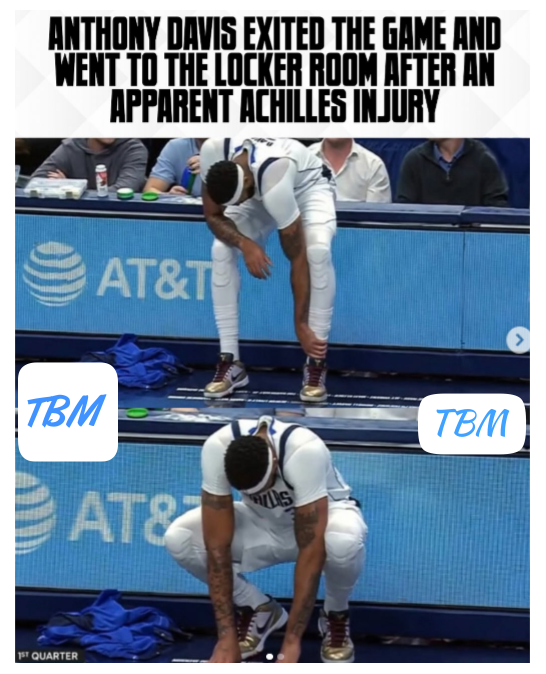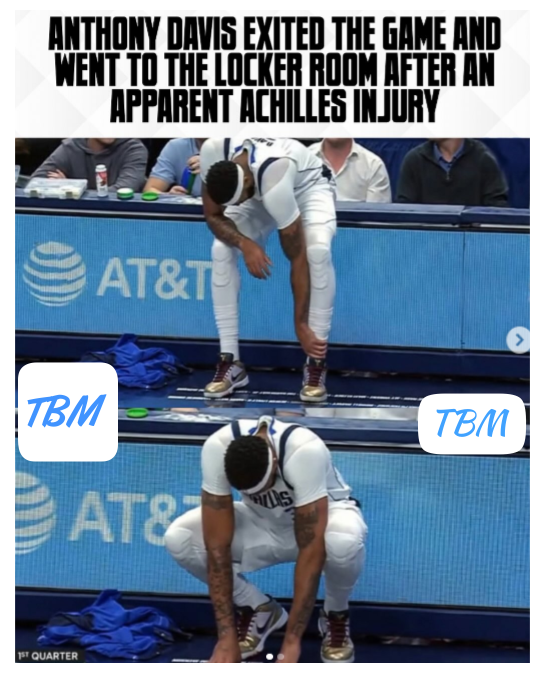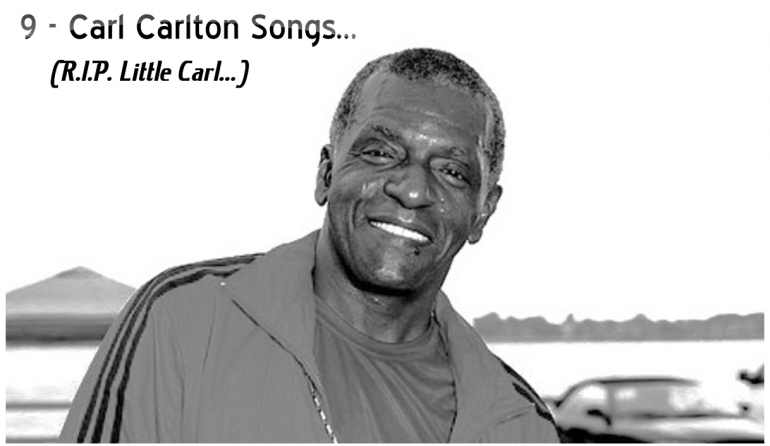Anthony Davis’s story has always been one of brilliance interrupted. Every time he seems ready to ascend and dominate, another setback arrives. From New Orleans to Los Angeles and now Dallas, injuries have been his most persistent opponent. Historically, the Achilles tendon has been the one injury athletes dread the most. It has ended careers, changed legacies, and transformed stars into shadows of what they once were. For Davis, it’s not a single rupture or dramatic tear, but a chronic issue, a slow erosion of durability that lingers over every jump, every sprint, every rebound.
The human body, even one as extraordinary as Davis’s, can only take so much. Standing over six-ten with guard-like agility, he plays a game that demands both grace and power. But those very gifts have become his curse. Each step he takes places tremendous force on the Achilles tendons, which act like springs propelling his massive frame upward. Over the years, that constant strain has added up. When you add the grind of full NBA seasons, cross-country travel, and the expectation of carrying a franchise, it’s a perfect storm for recurring injuries.
Why does Anthony Davis continue to get hurt? The easy answer is bad luck, but the deeper one lies in how the modern game has evolved. The NBA has transformed into a league where big men are expected to run the floor like guards, defend every position, and shoot from the perimeter. Gone are the days when a power forward could spend his career in the post, banging inside and taking measured steps. Today’s game demands pace, spacing, and endless movement. That’s an unnatural ask for someone Davis’s size. The result? A cycle of injuries born not out of weakness, but out of evolution itself.
There’s also the psychological toll. Being labeled “injury-prone” follows a player like a scarlet letter. It becomes part of the narrative, part of the scouting report, part of the fan chatter. For Davis, every fall to the floor draws gasps, every limp down the court becomes breaking news. It’s a heavy burden. A historian of the game can’t help but notice that players who battle constant injury rarely get the credit they deserve for resilience. They’re judged not by what they gave, but by what they couldn’t give. And yet, the reality is that few players have played through pain as often as Davis has.
His trade to the Dallas Mavericks last year was supposed to be a new beginning — a chance to redefine his career, to lead a team built around his two-way dominance. The move, which sent Luka Doncic? to Los Angeles, shocked the basketball world. It was seen as a bold gamble: trading the youthful brilliance of a generational playmaker for the seasoned power of a defensive juggernaut. The Mavericks believed Davis could deliver the kind of interior defense and versatility that would push them over the top. For a while, it worked. Davis’s presence was commanding. His rim protection reminded fans of his peak Lakers years, and offensively, he found comfort in Dallas’s spacing. But then, as if scripted by fate, the injury reports started to pile up again.
When Davis went down clutching his leg, it wasn’t just pain on his face — it was frustration, resignation, maybe even fear. He knew the feeling too well. Achilles injuries don’t just hurt; they haunt. Players who suffer them are never quite the same. Kobe Bryant’s legendary tear in 2013 stands as one of basketball’s most painful images. Kevin Durant’s rupture in the 2019 Finals reminded everyone that no amount of conditioning or technology can make the human body invincible. Davis’s situation may not be as catastrophic, but the concern is similar: how much more can one man’s legs take?
The irony is that Davis entered the league as the future of basketball — a big man who could do it all. His skill set was revolutionary. He could shoot, dribble, block, and run. He embodied the evolution of the power forward position. Yet, in the grand scope of NBA history, those same physical traits that made him a unicorn have made him vulnerable. Evolution has a cost. The athletes of today are faster, stronger, and more explosive than ever, but they’re also more fragile. The demands of the modern game have created players who burn bright but fade quickly. It’s not softness; it’s the price of playing a faster, more punishing version of basketball.
Critics often say NBA players are softer than they used to be. They point to the old days — when players like Karl Malone or Patrick Ewing would play through everything short of a broken bone — and use that as the gold standard. But that nostalgia ignores context. The league has changed. The pace is relentless, the floor is spread, and the collisions happen in space rather than in the paint. Athletes jump higher and land harder. Every step is measured, every movement analyzed. Playing through pain in 1995 is not the same as playing through pain in 2025. The science of sport now tells us that what was once called toughness can also be called recklessness. The difference is that now, teams are trying to preserve their stars, not destroy them.
Anthony Davis isn’t soft; he’s human. The public sees the limps, the early exits, the injury designations, and forgets the hours of physical therapy, the ice baths, the strengthening routines, the silent grind that comes with trying to keep a worn-down body functional. He’s not afraid to play through pain; he’s been doing that for years. But when the pain turns to risk — especially with an Achilles — discretion becomes the better part of valor. Achilles tendinopathy is not something to play with. Push it too far, and you risk a rupture that could end your career. Davis and the Mavericks know that all too well.
The bigger question now is whether Dallas can ever win a championship with him. When the Mavericks traded for Davis, the franchise was betting that his dominance on both ends of the floor could elevate them to a new level. For a moment, it seemed like the right call. But availability is everything in basketball. You can’t anchor a team from the trainer’s table. The Mavericks have talent, yes, but without Davis’s full participation, they lack the interior defense and leadership that separates good teams from great ones. It’s an old story in basketball: a team can have all the stars it wants, but it takes durability and chemistry to win titles. Dallas may have rolled the dice at the wrong time.
Still, history has shown that players with chronic injuries can reinvent themselves. Kevin Durant came back from an Achilles rupture to play at an All-NBA level. Dominique Wilkins did it in the 1990s when few thought it possible. The difference for Davis is that his problem isn’t one dramatic tear — it’s the accumulation of strain, wear, and fatigue over years of high-intensity play. To prolong his career, he may need to adapt his style — rely more on skill and positioning, less on explosion. If he can redefine his game, he can still be one of the most impactful players in the league. If not, this Achilles injury might mark the beginning of his decline.
For the Mavericks organization, this is a moment of reckoning. They must balance hope with realism. Davis’s health has become a symbol of their future. The city of Dallas has been hungry for another championship since the Dirk Nowitzki era. Davis was supposed to be the bridge between the past and the future — a superstar to restore pride and relevance. Yet, the sight of him limping to the locker room leaves fans questioning everything. Can a team truly build around a player whose body seems to betray him every season? Can Davis ever again play 70 games and dominate through the playoffs? Those are questions that will define this franchise’s next few years.
From a historian’s standpoint, what’s happening to Davis fits into a long line of cautionary tales. Every generation of basketball has its tragic hero — the player whose potential was limitless but whose body wouldn’t cooperate. Bill Walton in the 1970s. Grant Hill in the 1990s. Tracy McGrady in the 2000s. Each of them dazzled us with glimpses of greatness, and each of them left us wondering “what if.” Davis risks joining that list. He has the talent to be remembered among the all-time greats — his combination of defense, skill, and versatility is rare. But greatness isn’t just about what you can do; it’s about what you can sustain.
There’s also a philosophical question here: what do fans owe to players who struggle with injury? Society often treats athletes like machines — performers who exist to entertain. But athletes are people, subject to the same fragility that defines the human experience. Davis’s repeated injuries remind us of that humanity. Every time he goes down, we’re reminded that greatness is not invincibility. It’s persistence. It’s the courage to come back again and again, even when your own body is your greatest obstacle.
Injuries also shape legacies. If Davis never leads the Mavericks to a championship, critics will say the trade was a mistake. They’ll point to Luka Doncic? thriving with the Lakers and call it one of the great missteps in franchise history. But if Davis somehow recovers, stays healthy, and leads Dallas deep into the playoffs, the narrative could shift. Sports history is filled with redemption arcs. Players like Paul Pierce, Dirk Nowitzki, and even former teammate LeBron James endured years of criticism before finally silencing doubters. Davis could still write his redemption chapter — but the clock is ticking.
As for the claim that modern NBA players are too soft, perhaps it’s time to retire that notion. The game has changed. So has the science. Players aren’t weaker; they’re smarter about self-preservation. In Davis’s case, walking off the court might have saved his career. The old-school mentality of playing through pain might have satisfied fans for a night but cost him a season. Modern players know that one wrong decision can end it all. If that awareness looks like softness, so be it. Longevity requires humility.
Ultimately, Anthony Davis’s Achilles injury isn’t just another sports headline — it’s a reflection of the fragility that defines modern athletics. He is a generational talent living in a body that seems to resist that destiny. His story is one of constant resurrection, of brilliance met with betrayal. For Dallas, it’s a gamble that hangs between triumph and tragedy. For the league, it’s a reminder that no amount of money, fame, or technology can shield an athlete from the limits of flesh and bone.
When historians look back on this era, they may not just talk about stats or championships, but about the athletes who tested the boundaries of human endurance. Anthony Davis, for all his injuries and frustrations, represents that struggle. His Achilles tendinopathy is more than a medical condition; it’s a metaphor for a generation of athletes playing on the edge of what the human body can handle. The question now is whether Davis can defy history — or whether he’ll become another name on the long list of legends whose bodies couldn’t carry the weight of their own greatness.
Staff Writer; Jamar Jackson
This brother has a passion for poetry and music. One may contact him at; JJackson@ThyBlackMan.com.














Post comments (0)